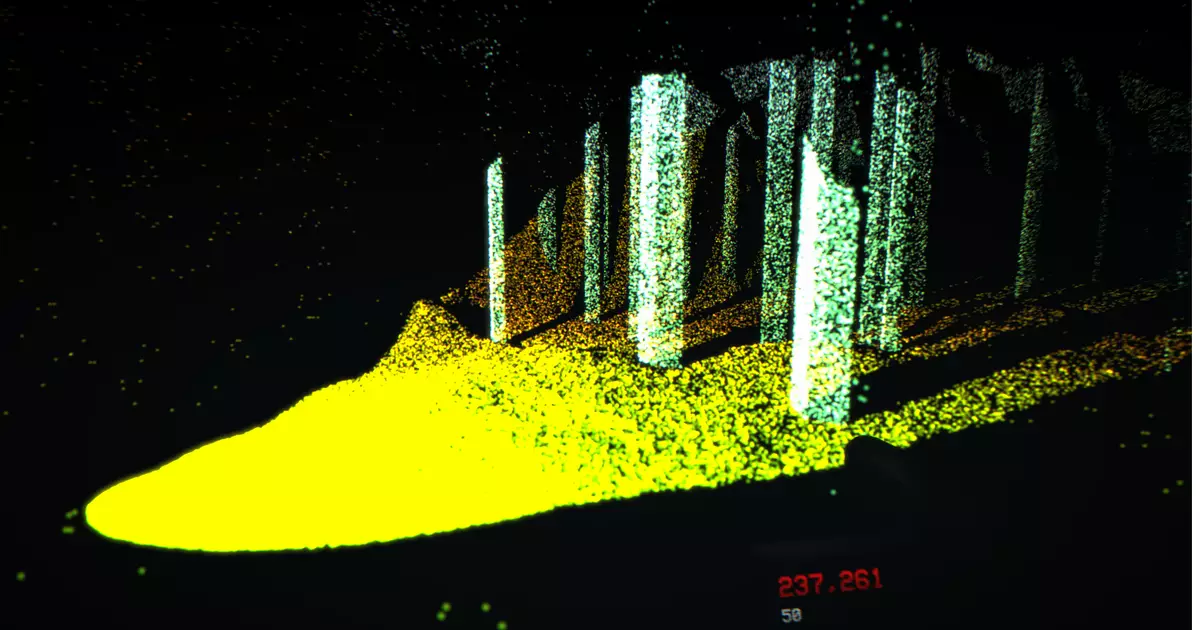At its core, LiDAR—short for Light Detection and Ranging—serves as a revolutionary tool that merges science with art. The technology employs laser pulses to measure distances, creating a high-resolution map of the scanned environment. LiDAR has found its way into various fields, from geospatial studies and urban planning to ecology and archaeology. It has the power to unveil hidden layers within our world, deciphering terrain variations and unveiling complex structures like cave systems and forest canopies. This sophisticated technology has made an unexpected leap into the realm of video gaming, most notably with titles that favor atmospheric immersion over traditional gameplay mechanics.
One such pioneering title is *LiDAR Exploration Program*, developed by the indie studio KenForest. This game moves beyond standard action and adventure tropes by combining the serene experience of exploration with an underlying sense of unease—a blend that creates a unique form of “relaxing atmospheric horror.”
The Game Mechanics: An Introspection into Calmness and Dread
The interface of *LiDAR Exploration Program* invites players to wield a handheld LiDAR scanner, a device originally designed for geological surveying, and use it to map out a richly textured world. As players navigate through the environment, they can scan their surroundings with a delightful precision, revealing structures and spaces hitherto concealed from view. This transformational quality of the LiDAR gun lends the game an almost therapeutic aura, akin to digital cleaning, while simultaneously enhancing the tension by withholding certain truths.
Unlike many games that strive for high-paced action, *LiDAR Exploration Program* meticulously encourages players to adopt a steady pace. Each level presents a list of objects to be scanned, setting a rhythm that lands somewhere between meditative and foreboding. As players, we are forced to confront our limitations; the scanner’s inability to penetrate opaque surfaces means we are forever left wondering what lies beyond our immediate perception. The gameplay becomes an unsettling exploration of not only space but of our understanding of reality itself.
The Subtle Horror of the Unknown
What makes *LiDAR Exploration Program* stand apart from typical horror games is its ability to craft tension without explicit scares. The eeriness emerges organically from the mechanics; as players scan their environment, a palpable tension infuses the air. Each reveal of a hollow object leads to an uncomfortable realization about the transient nature of existence within these digital landscapes. Just like walking through an exhibit of glass sculptures, there’s beauty in the visual representation, yet an underlying hint of something profoundly unsettling lies beneath the surface.
The game introduces various horror elements that serve to heighten the immersion. The scanner acts as the sole means of illumination, transforming light into a revealing agent—yet this light does not necessarily illuminate the truth; rather, it hides layers of mystery. Players may uncover dark, obscured corners that challenge their sense of safety as they navigate through the environment. And the top-down view maintains this tension, allowing players to reflect on their digital forays while simultaneously reminding them of their vulnerability. The experience is reminiscent of being a voyeur in a well-defined world, where safety is an illusion, and every corner poses an unknown threat.
The Artistic Lens: Beyond Traditional Gameplay
While many may approach video games primarily as forms of entertainment, *LiDAR Exploration Program* serves as a meditative tool, nudging players to appreciate the interplay of light and form. The meticulous scanning not only reveals the geometry of the environment but also pulls players into a deeper engagement with the spatial dynamics at play. Tightening and loosening the beams of the scanner brings forth layers of detail that breathe life into static visuals, transforming them into an almost painterly experience.
This aspect of the game has far-reaching implications for the medium of gaming itself. Most games prioritize immediacy and instant gratification, often sacrificing the opportunity for contemplative exploration and artistic expression. By encouraging players to linger, observe, and analyze, *LiDAR Exploration Program* invites a shift in the narrative of what video games can achieve beyond mere entertainment.
As digital escape routes transform with advances in technology, we owe it to ourselves to engage with games that push boundaries. Through the prism of LiDAR exploration, we can dip into deeper dimensions of both the scenic and the psychological, connecting artistry with the complexities of our perception.


Leave a Reply